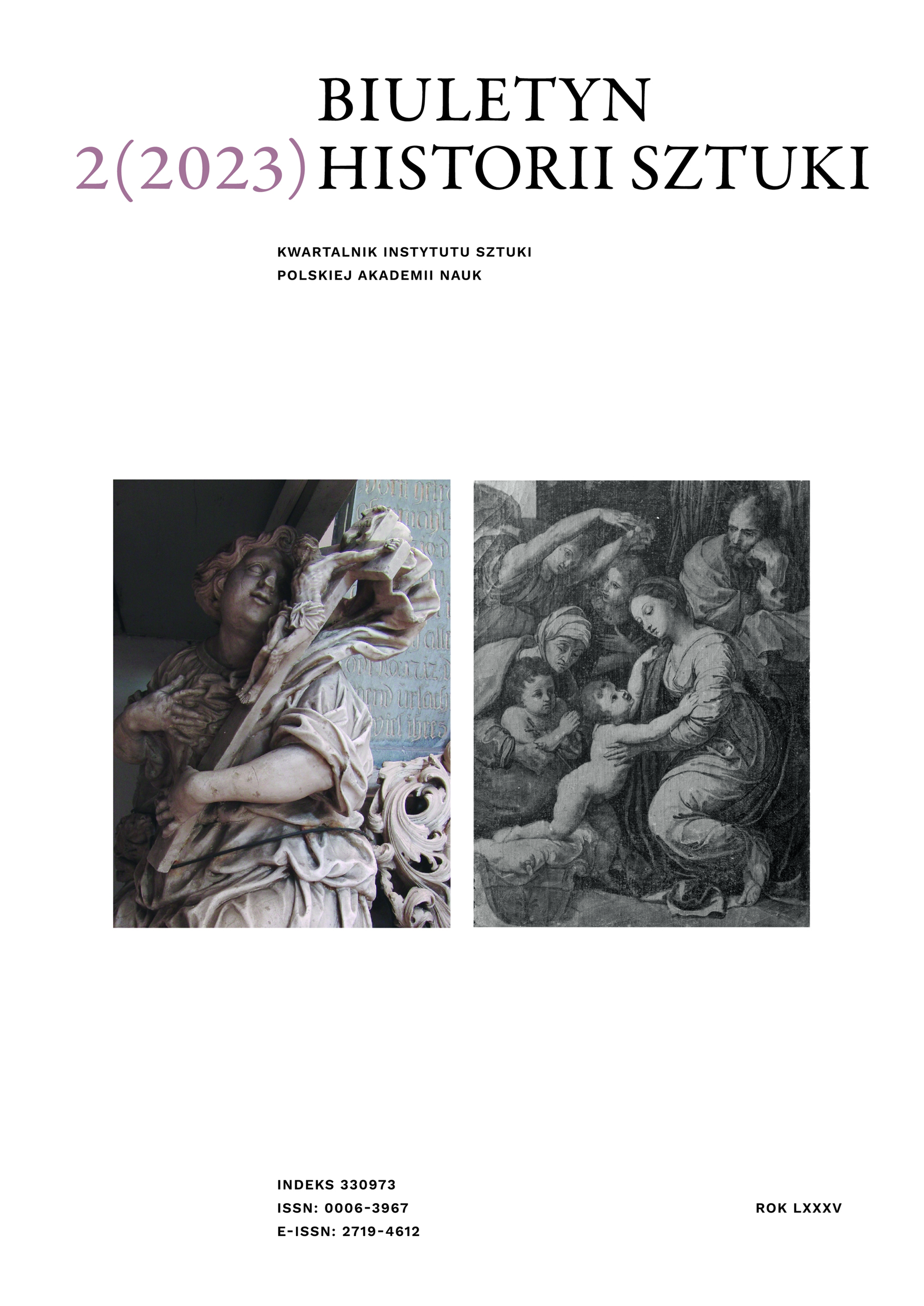Franz (Franciscus Hieronimus) Thomasberger – morawski rzeźbiarz
na Śląsku i w Wielkopolsce w pierwszej połowie XVIII wieku
Franz (Franciscus Hieronymus) Thomasberger, a Moravian Sculptor in Silesia and Greater Poland in the First Half of the 18th Century
Author(s): Bartłomiej ŁyczakSubject(s): Visual Arts, Local History / Microhistory, History of Art
Published by: Instytut Sztuki Polskiej Akademii Nauk
Keywords: craft guilds; Poznań; sculpture; early modern art; Wschowa; Bernardines; Nysa;
Summary/Abstract: In 1934, Alfred Brosig published the contents of a contract for the making of figures for the façade of the church of the Seraphic St Francis in Poznań, concluded in 1729 in Wschowa between the Bernardines and one “Franciszek Domusbergier, woodcarver and stonemason”. This document, now lost, was until recently the only evidence of this artist’s activity. Source queries in Polish and Czech archives have established that Franz (Franciscus Hieronymus) Thomasberger was born in Brno in 1696 and that his father was the sculptor Matthias Thomasberger. In 1721, he settled in Nysa, where he married, soon after obtaining citizenship and the title of a master craftsman. While in Nysa he worked, among others, on the decoration of the fountain (now lost) in the garden of the residence of the bishops of Wrocław. In the late 1720s, he moved to Wschowa, a town located in the Commonwealth of Poland and Lithuania, becoming its citizen in 1729. Two years later he was granted membership in the guild of masons and stonemasons; he died in 1744. Several statues in Wschowa, mainly in the Bernardine church, and a sculpture of St John of Nepomuk in Kościan, originally probably in the local Bernardine monastery, have been attributed to him on the basis of stylistic similarities.
Journal: Biuletyn Historii Sztuki
- Issue Year: 85/2023
- Issue No: 2
- Page Range: 87-108
- Page Count: 22
- Language: Polish

